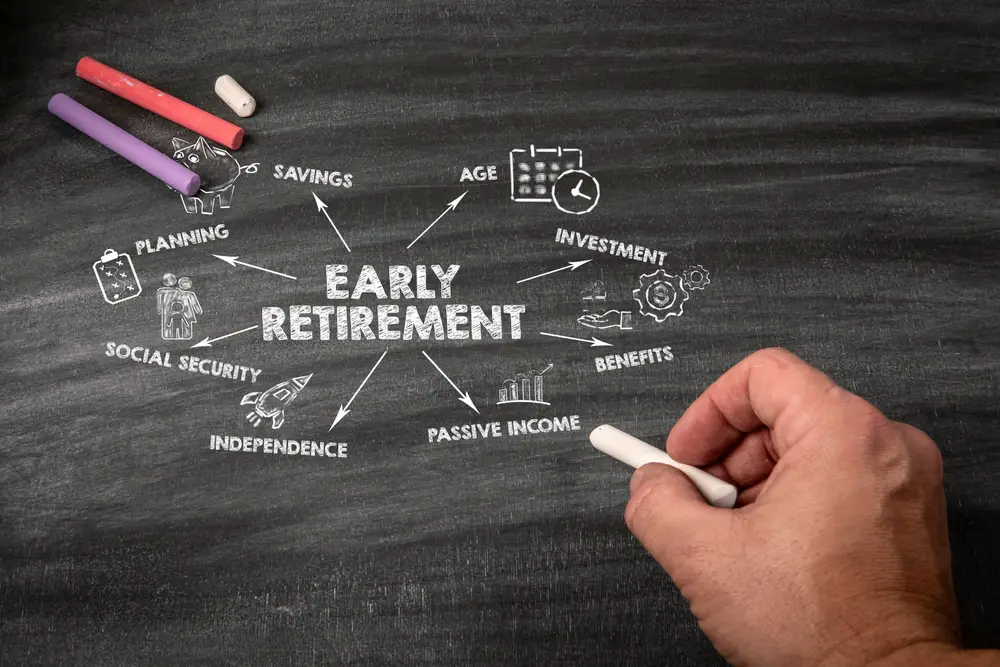See How to Plan for Retirement in Your 30s in the US Start planning for a secure retirement in your 30s! Discover expert tips and strategies for US individuals to maximize their retirement savings, create a sustainable income stream, and achieve long-term financial freedom.
Introduction
How to Plan for Retirement in Your 30s in the US
Planning for retirement might seem like a distant dream when you’re in your 30s, but it’s actually one of the smartest financial moves you can make. Think of it as planting seeds now so you can enjoy a lush, fruitful garden later. Starting early with your retirement planning sets you up for a future where financial stress is minimized, and you can enjoy the freedom that comes with a well-funded retirement. Let’s dive into how you can get ahead of the game and build a robust retirement plan while you’re still in your 30s.
Understanding Retirement Planning in Your 30s
Getting a jumpstart on your retirement planning in your 30s offers significant advantages. This phase of life is often characterized by increased earning potential, fewer financial obligations compared to later years, and the crucial benefit of time. Early planning leverages these factors to your advantage, setting the stage for a secure and comfortable retirement.
Why Start Planning Early?

The Power of Compound Interest
One of the most compelling reasons to start saving for retirement in your 30s is compound interest. Compound interest is the interest on a loan or deposit calculated based on both the initial principal and the accumulated interest from previous periods. In simpler terms, it’s interest on interest. Starting to save early allows you to benefit from this exponential growth. For instance, if you invest $1,000 at an annual interest rate of 7%, you’ll have about $2,050 in ten years, but if you wait until your 40s, you’ll need to save more to catch up.
Inflation and Its Impact on Retirement Savings
Inflation is another critical factor to consider. It erodes the purchasing power of your money over time. What costs $100 today might cost $200 in 30 years. By starting to save early, you can accumulate a larger nest egg to counteract the effects of inflation. It’s a bit like being ahead in a race—you’re less likely to be caught by the inflationary “wind.”
Assessing Your Current Financial Situation
Before you can set up a successful retirement plan, it’s essential to take a good look at your current financial situation. This involves understanding where you stand in terms of income, expenses, and debt.
Also Read – Importance of Emergency Fund in U.S. Personal Finance
Analyzing Income and Expenses
Start by tracking your income and expenses. Use tools like budgeting apps or simple spreadsheets to monitor your monthly cash flow. Look at how much you’re earning versus how much you’re spending. Are there areas where you can cut back? Perhaps you’re spending too much on dining out or subscriptions you rarely use. Redirecting even a small amount of these savings into your retirement fund can make a significant difference over time.
Understanding Your Debt Situation
Debt management is a crucial part of financial health. High-interest debts, such as credit card balances, can significantly impact your ability to save for retirement. Start by listing all your debts, including their interest rates and minimum payments. Prioritize paying off high-interest debt first, as this will free up more of your income for saving and investing.
Setting Clear Retirement Goals
With a clear understanding of your financial situation, you can start setting retirement goals. These goals will guide your saving and investing decisions and help you stay motivated.

Determining Your Retirement Age
One of the first steps is deciding at what age you want to retire. This will influence how much you need to save. For example, retiring at 65 might require a different savings strategy compared to retiring at 55. The earlier you plan to retire, the more aggressively you’ll need to save and invest.
Estimating Your Retirement Needs
Estimate how much money you’ll need for retirement by considering your desired lifestyle. Will you be traveling often? Do you plan to downsize your home or live in a high-cost area? Use retirement calculators to estimate your future needs. These tools can help you figure out how much you need to save monthly to reach your goal.
Building a Retirement Savings Strategy
Now that you have your goals set, it’s time to build a strategy to achieve them. This involves selecting the right savings and investment vehicles and ensuring your money is working as efficiently as possible.
Employer-Sponsored Retirement Plans (401(k), 403(b))
Employer-sponsored retirement plans like 401(k)s and 403(b)s are excellent tools for building your retirement savings. These plans allow you to contribute pre-tax dollars, which can reduce your taxable income. Additionally, many employers offer matching contributions—essentially free money. Be sure to contribute enough to take full advantage of any employer match.
Maximizing Employer Contributions
Employer matches are one of the easiest ways to boost your retirement savings. For example, if your employer matches up to 5% of your salary, make sure you’re contributing at least that amount. It’s like leaving free money on the table if you don’t.
Individual Retirement Accounts (IRAs)
IRAs, including Traditional and Roth IRAs, are another great way to save for retirement. Traditional IRAs allow for tax-deductible contributions, while Roth IRAs offer tax-free withdrawals in retirement. Determine which type aligns best with your current tax situation and future tax expectations. Contributing to an IRA in addition to your employer-sponsored plan can further increase your savings.
Also Read – Best Investment Options for Beginners in the US
Diversifying Your Investments
Diversification helps manage risk and improve potential returns. Rather than putting all your money into one type of investment, spread it across various asset classes such as stocks, bonds, and real estate. This approach helps protect your investments from market volatility.
Understanding Risk Tolerance
Risk tolerance is how comfortable you are with the possibility of losing money in exchange for higher potential returns. If you’re young and can afford to take more risks, you might invest more heavily in stocks. As you age, you might shift toward more stable investments to preserve your savings. Balancing risk with reward is key to a successful investment strategy.
Managing Debt While Saving for Retirement
Balancing debt repayment with saving for retirement can be tricky. However, effective debt management is crucial to maintaining a healthy financial life.
Prioritizing High-Interest Debt
High-interest debt can quickly diminish your financial resources. Focus on paying off credit card debt and other high-interest loans first. As you eliminate these debts, you’ll have more funds available to contribute to your retirement savings.
Creating a Debt Repayment Plan
Create a structured plan to tackle your debt. List your debts from highest to lowest interest rate, and consider using the avalanche method (paying off the highest interest debt first) or the snowball method (paying off the smallest debt first). Consistency and discipline are key to getting out of debt and freeing up money for savings.
Adjusting Your Plan as Life Changes
Life is full of changes, and your retirement plan should be flexible enough to adapt. Regularly review and adjust your plan to reflect any significant life events.
Marriage, Children, and Changing Priorities
Major life events such as marriage or having children can impact your financial situation and retirement goals. You may need to adjust your savings rate or reallocate investments based on your new priorities and financial responsibilities.
Career Changes and Their Impact on Savings
A career change can affect your income, benefits, and retirement savings. If you switch jobs, ensure you roll over your 401(k) into a new plan or IRA to keep your savings intact. Review your new employer’s benefits to make sure you’re maximizing your retirement savings opportunities.
Final Thoughts on Retirement Planning in Your 30s
Planning for retirement in your 30s might not be the most exciting topic, but it’s incredibly important. By starting early, you can take advantage of compound interest, manage inflation, and build a strong financial foundation. The sooner you begin, the more you’ll benefit from the financial growth and stability that comes with time. Remember, it’s never too early to start, and the steps you take now will pay off in the long run.
FAQs
How much should I save for retirement in my 30s?
Aim to save at least 15% of your income for retirement, including any employer match. Adjust this percentage based on your retirement goals and financial situation.
What’s the difference between a 401(k) and an IRA?
A 401(k) is an employer-sponsored plan with potential matching contributions, while an IRA is an individual account you can open independently. Both offer tax advantages, but contribution limits and tax treatments differ.
Is it better to pay off debt or invest for retirement?
Prioritize paying off high-interest debt first, as it often costs more than potential investment returns. Once high-interest debt is managed, focus on maximizing retirement savings.
How often should I review my retirement plan?
Review your retirement plan at least annually or whenever you experience significant life changes, such as a new job, marriage, or the birth of a child.
What happens if I don’t start saving for retirement until my 40s?
While it’s never too late to start, beginning in your 40s means you’ll need to save more aggressively to catch up. Starting in your 30s gives you a head start and allows your money more time to grow
Starting your retirement planning in your 30s can set you on a path to a financially secure and fulfilling retirement. By understanding your financial situation, setting clear


1 thought on “How to Plan for Retirement in Your 30s in the US”